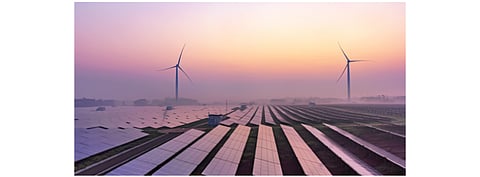

Japan's Ministry of Economy, Trade and Industry (METI) has published a draft of the country's basic energy policy to be followed through to FY2030, according to which it plans to increase the share of renewable energies in the total power mix to 36% to 38%. This would be an increase from the current target of 22% to 24%.
Nonetheless, it would still be less than what the businesses have been demanding. In January 2021, 92 companies sent a message to the Japanese government to increase the country's total renewable energy target to 40% to 50% by 2030 (see Japanese Businesses Push For Higher 2030 RE Target).
As per the plan, solar and wind power technologies will be the mainstay of this transformation, according to local media reports since Japan would be generating close to 934 billion kWh electricity in FY 2030. To this, renewable energy 'as the main source of power' will be contributing about 331 billion to 350 billion kWh.
Coal power's share in the electricity mix will be lowered from 26% currently aimed, down to 19% under the new plan.
Combined with non-carbon emitting power generation sources as nuclear power, the draft proposes Japan to aim for 60% electricity generation, which of course means nuclear power stays. In FY2019, according to The Japan Times, renewables accounted for 18% of the total power generation capacity of Japan, while nuclear power contributed 6%.
Specifically for solar power, it would mean increasing its share growing to 15% by FY2030, up from 6.7% in FY2019.
Since land is scarce for large scale solar and wind energy projects, the draft also recommends using abandoned farmland, and setting up dedicated districts for related businesses to operate their facilities. Energy storage may also be considered in the long term. The plan needs to be approved by the cabinet, once all stakeholder inputs are in.
If and when approved, the draft plan would contribute to the country's overarching goal of lowering its GHG emissions by 46% compared to 2013 levels by 2030.
The Yomiuri Shimbun recently reported the Ministry of Environment has proposed the government to expand the share of solar power generation by 2030 to a total of 108 GW, with the addition of 20 GW within FY2030, since it has already exceeded the official target of 64 GW (see Japan Eyes Over 108 GW Solar Power Capacity By 2030).
.png?w=50&fm=png)